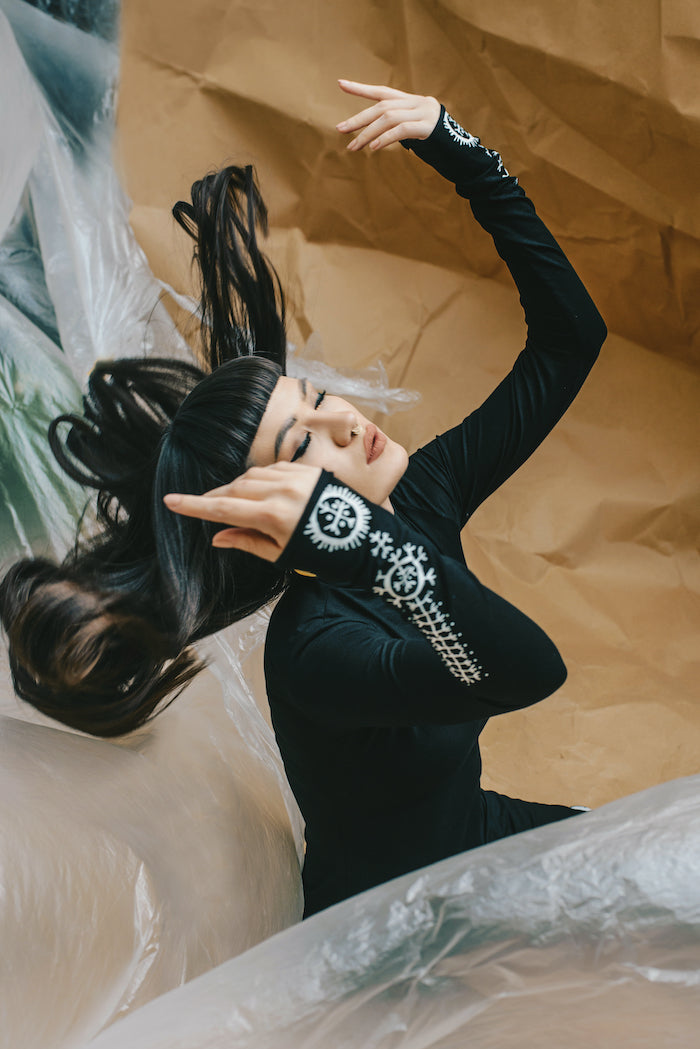
Traditional tattoos in Bosnia and a modern touch
Share
Traditional tattoos in Bosnia and a modern touch

By Zana Karkin
The mention of traditional tattoos may not be something you associate with Bosnia and Herzegovina but it may surprise you to find there is a long history of tattooing on these rugged plains. Notably, the custom is largely tied to an area of Central and Southern Bosnia and, in particular, Bosnian Catholics (mostly women), going all the way back to the 15th century and the Ottoman rule.
However, various historians and ethnologists claim that these symbolic ornaments were present long before the Ottomans arrived. Documents indicate they were a part of the prehistoric Illyrian heritage, signifying the rich spectrum of religious beliefs and burial rituals of that ancient time.

Image credit: Flickr | mikeyfreedom71
Over time, the practice became unanimous with Bosnian Catholic women who adopted tattooing as a way to show their religious affiliation and preserve their spiritual and cultural identity.

Image credit: Sciences & Voyages
The point of tattooing amidst the expanding Ottoman Empire was to show resistance to the resulting spreading of Islam and act as a reminder of the religion Bosnian Catholics were born into. The most frequent tattoo was that of a cross and its numerous variations and stylizations, but there were also a series of oriental ornaments such as the wheel, branches, sun, and others - some of which can be seen today on old tombstones and stećci.

Examples of ‘kolo’.
Image credit: Herald of the National Museum of Bosnia and Herzegovina
In doing so, they essentially created a new confessional garment. A select number of these reflect the variation in cultural identities in this region. It’s that unusual yet unique feel our Ina Čano tried to revive with our new collection of t-shirts and dresses, inspired by these symbols of body and spirit. These days, the art of traditional tattooing is nearly extinct, with only a select few maintaining the tradition and preserving the memory. This is our little way of preserving an oft-forgotten but valuable part of Bosnia-Herzegovinian cultural treasure.
Photo by Ajla Salkic - @zidajnerka.
I’ll let Ina explain the thought process behind the new clothing collection:
“As a kid from Jajce (Central Bosnia) growing up surrounded by older women (grandmothers and great-grandmothers) who literally wore this neglected, yet significant piece of history and tradition of this region, I was fascinated by these tattoos and stories I’d hear from an early age.
Photo by Ajla Salkic - @zidajnerka.
As an artist and a history lover, I felt the need to bring to life this old and unique Bosnian tradition, in my own way. Doing a collection for Bazerdžan was the most natural and logical next step, and these tops and dresses, imprinted with motifs of traditional tattoos, are the end result.”
The ceremony of tattooing was called ‘sicanje’ or ‘bocanje’ (needling) due to the way it was performed. Typically, older women would apply a needle on the drawn symbol which was covered in a mixture of charcoal and honey (sometimes gunpowder and milk were used). After the needling was done, the mixture would dry overnight and be washed in the morning.
Photo by Ajla Salkic - @zidajnerka.
The brunt of tattoos was done on the hands and arms, mostly the area surrounding the wrist and forearms, but also fingers and chest. Some data shows forehead was also commonplace for a tattoo.
Photo by Ajla Salkic - @zidajnerka.
Tattooing would usually be performed on the 19th of March - Saint Joseph's Day. The date also represented the change of seasons and the beginning of spring, with other dates (mainly Catholic holidays) used for the occasion too. Kids, mostly girls, aged between 12 and 16, were tattooed, although there are instances of children as young as the age of six participating in the activity.
Photo by Ajla Salkic - @zidajnerka.
Due to the growing industrialization and expansion of urban life that began with the arrival of the Austro-Hungarian Empire, the custom began to fade, until it practically vanished in the 1950s. It’s important to note that these tattoos were not only ornaments but messages as well:
messages of courage and resolve to keep one’s identity from the fringes of history.
Photo by Ajla Salkic - @zidajnerka.






